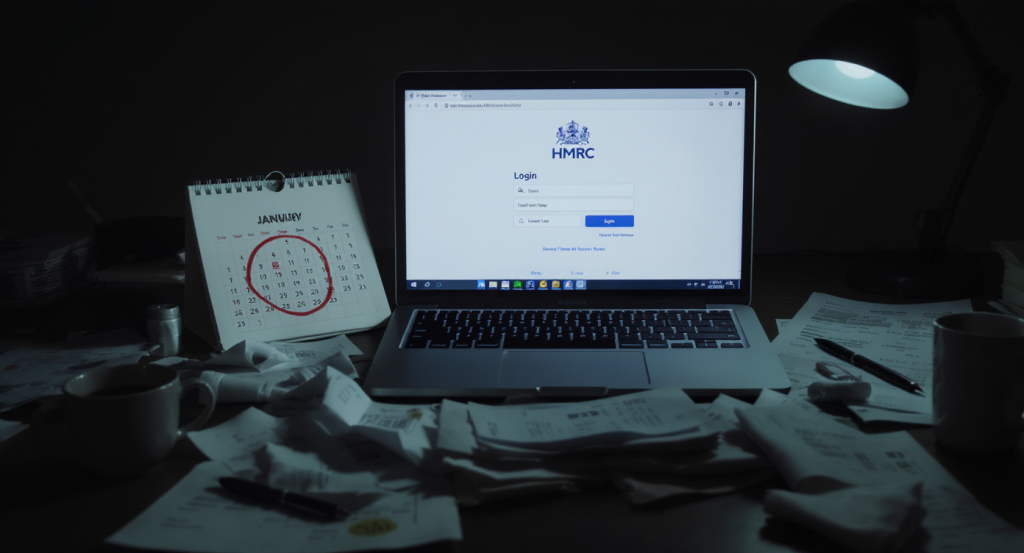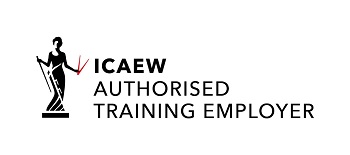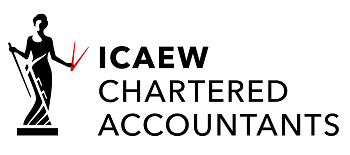
Tax season. Those two words alone can send a shiver down the spine of even the most organised among us. There’s something uniquely British about leaving everything until the last possible moment, isn’t there? We’ll queue politely for hours but somehow convince ourselves that we’ll definitely file our tax return tomorrow. Until suddenly it’s 30th January, the HMRC website is groaning under the weight of panicked submissions, and you’re frantically searching through a shoebox of receipts whilst questioning every life choice that led you to this moment.
But here’s the thing – it doesn’t have to be this way. Filing your tax return can actually be… dare I say it… manageable. Even straightforward. I know, I know – that sounds about as believable as saying you enjoy root canal treatment. Yet thousands of people manage to file their tax return without breaking into a cold sweat or developing a sudden urge to emigrate.
The secret isn’t having an accountancy degree or possessing superhuman organisational skills. It’s simply understanding what you’re dealing with and tackling it systematically. When you need to File Tax Return documents, think of it like assembling IKEA furniture – it looks impossibly complex at first glance, but once you understand the instructions (and resist the urge to throw the Allen key across the room), it all clicks into place.

The Great British Tax Muddle: Why We Make It Harder Than It Needs to Be
Let’s be honest – most of us approach tax returns with all the enthusiasm of attending a dentist appointment during a heatwave. We procrastinate, we panic, we promise ourselves we’ll start earlier next year (spoiler alert: we won’t), and then we either rush through it or pay someone else to deal with our financial chaos.
The 2024/25 tax year runs from 6 April 2024 to 5 April 2025, and if you need to file your tax return online, you have until midnight on 31 January 2026 (GOV.UK/Which?). That’s nearly ten months after the tax year ends. Ten months! You could learn Mandarin in that time. Yet somehow, about 1.8 million people miss the online filing deadline each year (GoSimpleTax), resulting in automatic £100 penalties.
The irony is that filing a tax return has never been easier from a technical standpoint. HMRC’s online system does most of the calculations for you, flags obvious errors, and even provides helpful prompts. But we’ve managed to turn what should be a relatively straightforward administrative task into an annual festival of stress and confusion.
Part of the problem is that tax terminology feels deliberately opaque. “Self Assessment“, “payments on account”, “Class 4 NICs” – it’s as if HMRC hired someone whose sole job was to make everything sound as complicated as possible. Then there’s the creeping scope of who needs to file. You need to complete a Self Assessment if you’re self-employed and earned more than £1,000, have untaxed income over £2,500, work as a company director, earn over £10,000 from savings and investments, or fall into various other categories (TaxScouts/Greenback).
Who Actually Needs to File (And Why the Rules Keep Changing)
The “do I need to File Tax Return documents?” question has become increasingly complex. Gone are the days when it was just the self-employed and landlords. Now you might need to File Tax Return forms if you have high income child benefit charges (earning over £60,000), received dividends over £10,000, sold property with capital gains implications, or have various other income sources (TaxScouts/LITRG).
HMRC has a handy online tool to check if you need to file (GOV.UK), but even that can be a bit like asking “how long is a piece of string?” Your circumstances might change during the year, or you might discover income sources you’d forgotten about. The golden rule? If you’re genuinely unsure, it’s better to register and file than to risk penalties for not filing when you should have done (GOV.UK/LITRG).
Here’s a reality check: most people in the UK don’t need to file a tax return because their income is taxed through PAYE (Who needs to file a tax return? Find out here – TaxScouts). If you’re a straightforward employee with no other income sources, you can probably ignore this entire article (lucky you). But if you’ve got any additional income – even from something as innocent as selling items online or doing a bit of freelance work – you might need to pay attention.
The registration deadline is crucial: if you’ve never filed before, you must register for Self Assessment by 5 October following the end of the tax year (GOV.UK). Miss this, and you’re already facing potential penalties before you’ve even started.
The Deadline Dance: Paper vs Digital Filing
Let’s talk deadlines, because apparently we Brits love nothing more than a good deadline to ignore until the last possible moment.
| Filing Method | Deadline | Notes |
| Paper return | 31 October 2025 | Earlier deadline to allow processing time |
| Online return | 31 January 2026 | Midnight deadline – don’t push it! |
| Tax payment | 31 January 2026 | Interest charges from 1 February |
| Collect via tax code | 30 December 2025 | Only if tax bill under £3,000 |
Paper filing is gradually being phased out, so it’s worth getting comfortable with digital submission sooner rather than later (Key dates in the UK tax year 2025/26 | Crunch). Plus, filing online gives you that extra three months’ breathing space, and who doesn’t need more time to procrastinate?
But here’s a thought: what if we didn’t treat the deadline as the target date? Revolutionary, I know. Filing early allows you to plan ahead for your tax bill and avoid the last-minute rush when HMRC support teams are overwhelmed (Key Dates For The 2025/26 UK Tax Year). You can start filing as soon as the tax year ends on 6 April, which means you could theoretically have your return submitted by Easter and spend the rest of the year feeling smugly superior to everyone else.

The Art of Not Messing It Up: Common Mistakes That Cost You
Now we get to the fun part – all the ways you can inadvertently annoy HMRC and end up with penalties that make you question whether tax avoidance really is such a crime. The most common mistake is simply filing late, which triggers an automatic £100 penalty even if you don’t owe any tax (RIFT Refunds/GoSimpleTax). Followed quickly by failing to include all your income sources – apparently HMRC has become quite good at data matching and spotting discrepancies.
The Classic Blunders Include:
- Getting your UTR (Unique Taxpayer Reference) wrong. This ten-digit number is what HMRC uses to identify you, and getting it wrong will void your submission (7 most common Self Assessment tax return errors revealed | GoSimpleTax). It’s like trying to board a flight with someone else’s passport – technically possible but definitely not recommended.
- Forgetting supplementary pages when your situation is complex. If you have overseas income, life insurance payouts, or other unusual income sources, you’ll need additional forms beyond the standard SA100 (7 most common Self Assessment tax return errors revealed | GoSimpleTax). Miss these, and HMRC will come asking questions later.
- Including non-taxable income by mistake. Premium Bonds winnings, betting winnings, and UK Government Gilts don’t need to be declared, and including them creates unnecessary confusion (How to Correct a Self Assessment Error or Mistake).
When Things Go Wrong
HMRC operates a behaviour-based penalty system ranging from 0% to 100% of the underpaid tax (Heelan Associates/A4G LLP). If you’ve taken “reasonable care” and made a genuine mistake, you’re likely to face minimal penalties.
The good news? You can amend your return within 12 months of the filing deadline if you spot an error (What if I have made a mistake on my tax return? – TaxAid). If you filed online, you can simply log back in and update the information. Paper filers need to submit a new return marked “amended return”.
Remember, even if you use an accountant or agent, you’re still responsible for the accuracy of your return (What happens if I make a mistake on my UK tax return?). So don’t just sign off on something you don’t understand – ask questions, check details, and make sure you’re comfortable with what’s being submitted in your name.
Breaking Down the Process: A Sane Approach to Filing
Right, let’s assume you’ve established that you do indeed need to file your tax return. The next question is whether to tackle it yourself or outsource it to a professional. If your financial situation is straightforward – maybe you’re self-employed with simple income and expenses, or you have rental income from a single property – doing it yourself is perfectly feasible.
HMRC’s online system is actually quite user-friendly once you get past the initial intimidation factor. It guides you through each section, calculates totals automatically, and flags potential errors before you submit. You can save your progress and come back to it later, which is handy because you probably won’t have all your paperwork organised in one go (let’s be realistic).
For those brave enough to go DIY, here’s the rough process:
- Getting Started: Log into your personal tax account on GOV.UK using your Government Gateway details. If you don’t have these, you’ll need to register and wait for your activation code to arrive by post. Yes, in 2025, we’re still doing some things by actual post.
- Gathering Information: This is where most people come unstuck. You’ll need details of all your income sources, allowable expenses, pension contributions, charitable donations, and various other financial bits and pieces. The key is having good records throughout the year rather than trying to reconstruct everything from bank statements and faded receipts.
- Working Through the Sections: The online form is divided into logical sections – employment, self-employment, property, savings, investments, and so on. Only complete the sections that apply to you. Don’t feel obliged to fill in every box just because it’s there.
- Checking and Submitting: Review everything carefully before submitting. The system will calculate your tax liability and any payments due. Once submitted, you’ll get a confirmation and can download a copy for your records.
The Professional Option: When to Call in the Cavalry
Sometimes, though, you need professional help. If your tax affairs are complex – multiple income sources, overseas elements, significant capital gains, business partnerships – then finding a good accountant or tax advisor is probably worth the expense.
This is where services like those offered by Ask Accountant can prove invaluable. Based at 178 Merton High St, London SW19 1AY, they provide comprehensive tax advisory solutions, business accounting services, and proactive tax planning that can save you both time and money. When you’re dealing with CIS claims and refunds, inheritance tax planning, or complex business structures, having experts who understand the intricacies of tax law can make the difference between compliance and chaos.

The key is finding someone who:
- Understands your specific situation and industry
- Communicates clearly without drowning you in jargon
- Is proactive about identifying tax-saving opportunities
- Has a good track record with HMRC compliance
- Charges transparently for their services
A good accountant doesn’t just file your tax return – they help you plan throughout the year to minimise your tax liability legally, ensure you’re claiming all available reliefs, and keep you informed about changes that might affect you.
Planning Ahead: Making Next Year Less Painful
Here’s a radical thought: what if we treated tax preparation as an ongoing process rather than an annual crisis? I know, it sounds about as appealing as meal prepping every Sunday, but bear with me.
| Month | Task | Why It Matters |
| April | Start new year records system | Fresh start, good habits |
| July | Mid-year review & estimated tax calculation | Payments on account deadline |
| October | Register if needed (deadline 5th) | Avoid late registration penalties |
| December | Gather documents, start preparation | Beat the January rush |
| January | File return & pay tax (by 31st) | Avoid penalties |
Record Keeping Throughout the Year
The single biggest favour you can do your future self is to keep decent records as you go. This doesn’t mean becoming obsessive about every coffee receipt, but it does mean having a system for tracking business expenses, keeping bank statements organised, and noting down any unusual income or capital gains when they occur.
Modern accounting software can make this much easier. Many apps can photograph receipts, categorise expenses automatically, and even integrate with your bank accounts to track income and spending patterns. The key is finding a system that works for you and actually using it consistently.
The Technology Revolution: How Digital Tools Are Changing the Game
When you File Tax Return documents digitally, it isn’t just about meeting deadlines – it’s about making the whole process more manageable. HMRC’s online system connects to various databases, so some information might be pre-populated (like employment income if you’re on PAYE). This reduces errors and speeds up the process significantly.
Third-party software has also evolved considerably. Many applications now offer guided interviews that ask you questions in plain English and translate your answers into the appropriate tax form entries. Some even provide real-time tax calculations, showing you the impact of different scenarios before you commit to your final return.
The benefits of going digital include:
- Automatic calculations reduce arithmetic errors
- Built-in error checking catches common mistakes
- Progress can be saved and resumed later
- Immediate confirmation when successfully submitted
- Electronic records for your files
- Faster processing and refunds when due
Common Scenarios: Real-World Examples
Let’s get practical with some scenarios that might sound familiar:
- Sarah the Freelancer: Works part-time for a marketing agency (taxed through PAYE) but also does freelance copywriting that brought in £8,000 last year. She needs to File Tax Return documents because her self-employment income exceeded £1,000. Her PAYE income will be pre-populated in the system, and she’ll need to add her freelance income and any allowable business expenses.
- Mike the Property Investor: Rents out his former home after moving in with his partner. The rental income is £1,200 per month, and after allowable expenses (insurance, maintenance, letting agent fees), his profit is around £8,000 annually. He definitely needs to File Tax Return forms and will use the property pages of the self-assessment form.
- Emma the Side Hustler: Sells handmade crafts on Etsy and at local markets. Her sales totalled £2,500 last year, but after materials and fair fees, her profit was only £800. Technically, she might not need to file (under the £1,000 trading allowance), but she’s decided to register anyway because she expects her business to grow.
Planning Your Tax Strategy: Beyond Just Filing
After you have perfected the technique of doing your tax return without throwing a tantrum, you may wish to consider some strategic tax planning on how to pay less tax. This is not dodgey schemes or creative accounting this is about knowing the legitimate reliefs and allowances that you may be overlooking.
It is commonly forgotten about pension contributions. Private pension contributions Taxpayers who make higher rate contributions often overlook the opportunity to obtain further tax relief on these contributions (Common Tax Return Mistakes Costing Taxpayers). When you are making contributions to a personal pension you may be entitled to reclaim the basic rate less higher rate relief.
Higher rate tax payers can also get further tax relief when they give to charity under Gift Aid. The charity obtains basic rate relief on your donation, and if you are a higher rate taxpayer you can claim the difference.
Marriage Allowance allows you to convey some of your personal allowance to your partner provided they earn more than you- and could save eligible couples up to £252 a year.
Time may be of the essence to business owners. Accelerating the expenses or delaying the income into other tax years can in some cases save you tax over all, but this requires care and professional guidance.
Firms such as Ask Accountant are in the business of this proactive tax planning. Their business advisory services and tax advisory solutions could guide you through the minefield that is inheritance tax, business growth planning, and auto-enrolment preparation as well as making sure you were making use of all the legal tax-saving opportunities open to you.
When Things Go Wrong: Penalties, Payments, and Peace of Mind
Late filing penalties start at £100 and escalate quickly – daily fines of £10 (up to £900) if you’re three months late, then percentage-based penalties as delays continue (Raisin/Which?). HMRC charges interest on late payments at the Bank of England base rate plus 2.5% (Tax returns 2025: important deadlines – Which?).
If you have a reasonable excuse for missing deadlines – serious illness, bereavement, technology failures – you can appeal penalties. HMRC’s definition of “reasonable excuse” is fairly narrow, but it’s worth trying if you have genuine circumstances beyond your control.
Payment difficulties are more common than you might think. If you can’t pay your tax bill on time, contact HMRC as soon as possible to arrange a payment plan (Tax year dates and deadlines UK 2025 | Sage Advice UK). You can set up a payment plan online if you owe less than £30,000, are within 60 days of the deadline, and have filed your latest return (Tax year dates and deadlines UK 2025 | Sage Advice UK).
The crucial thing is communication. HMRC would rather work with you to collect tax over time than pursue expensive enforcement action. Burying your head in the sand and hoping the problem will go away is the worst possible strategy.
Looking Forward: The Future of Tax Filing
Tax administration continues to evolve, with HMRC increasingly using digital-first approaches and automated systems. Making Tax Digital for Income Tax (MTD for IT) launches from 6 April 2026 (Key Dates For The 2025/26 UK Tax Year), which will require eligible taxpayers to keep digital records and submit quarterly updates.
This might sound daunting, but it’s likely to make tax compliance easier in the long run. Rather than scrambling to reconstruct a year’s worth of financial activity every January, you’ll be maintaining ongoing digital records that flow seamlessly into your tax calculations.
The trend is clearly towards more frequent, smaller interactions with the tax system rather than the current annual crisis model. This should reduce stress, improve accuracy, and make tax planning a more integrated part of running a business or managing personal finances.
Your Action Plan: From Chaos to Compliance
So where does this leave you? If you need to File Tax Return documents for 2024/25, here’s your practical action plan:
- First, establish whether you actually need to file. Use HMRC’s online checker tool or speak to a professional if you’re unsure. Don’t assume you’re exempt just because you’re employed – you might have other income sources that trigger the requirement.
- If you need to register for the first time, do it before 5 October 2025. Don’t leave this to the last minute as you’ll need time to receive your UTR and activation codes.
- Gather your documents systematically. This includes P60s, P45s, bank statements, receipts for business expenses, details of any property income, savings interest, dividend vouchers, and pension contribution certificates. Having everything in one place before you start will make the process much smoother.
- Decide whether to DIY or use a professional. For straightforward situations, HMRC’s online system is perfectly adequate. For complex affairs – multiple income sources, overseas elements, significant capital gains – professional help is often worth the cost.
- Don’t leave it until January. You can file from 6 April onwards, so why not aim for a summer submission when you’re not competing with millions of other last-minute filers? (Tax returns 2025: important deadlines – Which?)
- Consider the bigger picture. Filing your tax return is just one part of effective tax planning. Think about pension contributions, charitable giving, and other legitimate ways to reduce your tax liability.
For those dealing with more complex situations – business accounting, CIS schemes, inheritance tax planning, or needing ongoing business advisory services – professional support becomes essential. Ask Accountant offers comprehensive services from their London office (phone: +44(0)20 8543 1991) covering everything from basic bookkeeping to proactive tax advisory solutions and business growth planning.
Frequently Asked Questions About How to File Tax Return
Do I need to file tax return documents if I’m employed? Most employed people don’t need to file tax return forms because employers deduct tax through PAYE(Who needs to file a tax return? Find out here – TaxScouts), but you’ll need to file if you have additional income over £1,000 from self-employment, over £2,500 from other untaxed sources, or fall into other specific categories like being a company director.
What happens if I File Tax Return documents late? You’ll face an automatic £100 penalty for filing even one day late, with additional daily fines and percentage-based penalties if the delay continues (Raisin/Which?). Interest also accrues on any unpaid tax from 1 February.
Can I correct mistakes after I File Tax Return forms? Yes, you can amend your return within 12 months of the filing deadline (What if I have made a mistake on my tax return? – TaxAid). For online returns, simply log back in and make the corrections. Paper filers need to submit a new return marked “amended return”.
How long should I keep my File Tax Return records? You should keep records for at least five years after the 31 January submission deadline. HMRC can investigate returns going back several years, so having supporting documentation is crucial.
What’s the difference between paper and online when I File Tax Return documents? Paper returns must be submitted by 31 October, while online returns have until 31 January (Crunch/GOV.UK). Online filing gives you an extra three months and is HMRC’s preferred method.
But, let us be realistic, there are situations when even our best intentions fail to work out properly. Perhaps you have missed the deadline, found an error after submitting or HMRC needs to query your return. The point is not to get panicked and address problems in time.







